I received this book for free from the Publisher in exchange for an honest review. This does not affect my opinion of the book or the content of my review.
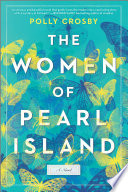 The Women of Pearl Island by Polly Crosby
The Women of Pearl Island by Polly Crosby Published by Harlequin, Park Row Books on December 7, 2021
Genres: Fiction / Coming of Age, Fiction / Nature & the Environment, Fiction / Sagas, Fiction / Sea Stories
Pages: 355
Format: eBook
Source: Publisher
Buy on Amazon
Goodreads

With the same atmosphere and imagination of THE BOOK OF HIDDEN WONDERS, Polly Crosby’s new novel, THE WOMEN OF PEARL ISLAND is set on a lush, secluded island where family secrets bring together an unlikely friendship.
On a secluded island off the British coast, an elderly woman named Marianne collects butterflies and memories from her past. No longer able to catch butterflies herself, she enlists the help of a young woman named Tartelin who has peculiar birthmark on her cheek. Tartelin’s mother has recently passed, leaving her unmoored and eager for new beginnings on the island.
Marianne has spent most of her life on the island, her family having owned it for generations. She begins to tell her young assistant her family’s story – from the prosperous days when they harvested pearls and held banquets, to the harder times and her father’s desperate money-making schemes. But during WWII, the British government commandeered the island for nuclear testing and they were all forced to leave. Though, secret to everyone, Marianne stayed behind and experienced something she calls “the blast,” an event that changed everything for her. Now, the older woman is obsessed with tracking the changes in butterflies and other creatures on the island to prove what she witnessed so many decades before.
With a mystery spanning decades, this is an emotional and atmospheric story of a young woman coming into her own as she forges an unlikely friendship with her employer, both women grieving their pasts and together, embracing a new future.
Novels that blend historical and modern timelines can be hit or miss. I really enjoyed Polly Crosby’s latest book, THE WOMEN OF PEARL ISLAND. Check out the excerpt from Chapter 1, and stick around at the bottom for my review.

ONE
Tartelin
Summer 2018
“I do not require diaper changing, I do not require spoon-feeding, I do not require my ego massaging. What I do require is someone with a deft pair of hands. I asked for someone with experience in dealing with little things, delicate things. A scientist, perhaps. Is that you?”
I nod.
“Show me your hands, then, child.”
I hold them out, palm side downward, and she wheels herself over and inspects them. Her own hands, I see now, have a tremor.
“You’re a pretty girl,” she says, her eyes drifting over my face, glancing off my cheek, and I feel my skin redden. “Not very robust, though. Are you sure this is the right job for you?” I open my mouth to speak, but she cuts me off. “What did you do, before you came here? How is it that you are suited to this vacancy?”
I frown. We went over all this in our letters, back and forth, back and forth. Written on paper, not sent by email, each one signed Miss Marianne Stourbridge in her regimented, barbed-wire scrawl. My life back home was the reason she chose me. But then, she is old, and she can’t be expected to remember everything.
“I grew up around my mother’s artwork, helping her out in her studio,” I say, more loudly than I mean to. “And then I went to art school myself. Mum’s work was focused on found objects, making art from bits of nature…feathers, leaves and twigs—”
“Lepidoptera aren’t ‘bits of nature,’ Miss Brown.”
“She also made sculptures out of grains of rice in her spare time. I helped her.”
“Why on earth would anyone do that?” She leaves the ques-tion hanging in the air and turns her chair abruptly, wheeling herself back to her desk.
The chair is made from cane. It looks like an antique, and I’m surprised it still works. It must be exhausting to propel.
“It’s a shame you don’t have a scientific background, but now you’re here, you’ll have to do. Here, hold this.” She lifts a pair of gold tweezers into the air and I hasten forward and take them. “No, not like that. Pinch. Gently. That’s it.”
I adjust my hold and feel how the spring of the tines is like an extension of my fingers, and I’m back with my mother and she’s saying, “Careful, Tartelin, don’t squeeze too hard. Feather barbs bruise easily.” But before I can use this new-found body part, the tweezers are whisked away from me, and she’s turning again to the desk and bending over her work. I stand by her side and wait, wondering if I’m allowed to go. The clock on the mantel chimes loudly. I count eight. I look at my watch. It’s ten past two.
Miss Stourbridge? Shall I adjust your clock?”
“No point. It’ll only go back to eight o’clock.”
I look over at it, frowning. The second hand is juddering in jerky movements. It makes me dizzy to look at it, as if it’s mea-suring a different kind of time. I turn back to my employer.
Miss Stourbridge is so still as she works. I can see her teas-ing the body of a dead moth from a cocoon, her fingers mov-ing infinitesimally slowly. I look around the room. It is lined in dark panels of wood, and every surface has frames and frames of butterflies and moths, glinting pins plunged into husked bodies.
“Did you catch all these butterflies?”
She is silent, and at first I think she hasn’t heard me. But then I see she’s holding her breath so as not to disturb the moth’s delicate wings. I watch closely, the clock ticking behind us. I’m looking not at her work but at her ribs, waiting for them to inflate, waiting for her nostrils to swell, anything that shows air is passing into her chest. My eyes sting from the pain of staring. She is so still that she has become a part of the chair she sits in. Only her finger and thumb move ach-ingly slowly, and the minutes tick by.
When I was young, I used to try to be as still as she is now. My mother would sit me on her knee and tell me stories, and I would hold myself as still as a statue, bewitched by her tales.
“Long ago,” she always began, in a voice that was reserved only for when the moon was rising, “I was a tiny jellied spawn no bigger than a pearl, floating in the earth’s great oceans. The fish nibbled and swallowed my brothers and sisters up, snap, snap, snap, and I was left, coming at last to rest on the pebbled shore of a beach. And that is how I came to have these,” she would say, waving her hands in front of my face, so close that they skimmed my eyelashes and all I could see was the thin layer of webbed skin between each finger. To my unprejudiced four-year-old eyes, the webs were not a deformity: they were beautiful, useful, magical, and I wished with all my heart that I could be like her, could be from the sea.
I take my eyes from the poor moth on the desk and look over Miss Stourbridge’s head to the picture window that frames the sea beyond, and I remember anew that the sea surrounds us here, like a comforting arm holding the world at bay. A feeling of calm settles over me. However strange this woman is, whatever my job might entail, it was the right decision to come here, I can feel it.
I had seen the advertisement in one of Mum’s ornithologi-cal magazines. Mum bought them for the photographs. She particularly liked the close-ups of the birds’ eyes and feathers. The magazines were littered throughout our house, spattered with drops of paint, pages ripped out and twisted together into the vague forms of gulls and robins so that every surface was covered in paper birds made of paper birds.
But the latest magazine had landed on the doormat, pris-tine and untouched, and when I shook it from its clear plastic covering, it had fallen open on the ad.
PA required to assist lepidopterist. Must be able to start immedi-ately. Must not be squeamish.
When I had written to ask for more information, the return address had intrigued me.
Dogger Bank House, Dohhalund.
Dohhalund. An unusual word, not English-sounding at all. A bit of research showed me that it was a tiny island off the East Anglian coast, the long thin shape of it reminiscent of a fish leaping out of the water. Its heritage was a mixture of English and Dutch. When I looked at it on a map on my phone, it had seemed so small that I imagined you could walk its circumference in only a few hours. I had tried to picture what kind of an island it would be: a cold, hard rock grizzled with the droppings of thousands of seabirds, or a flat stretch of white sand, waiting for my footprints? Whatever it turned out to be, the isolation of it appealed to me.
Miss Stourbridge’s letters had been vague about the posi-tion she was offering, but she did tell me, rather proudly, that the island had belonged to her family for hundreds of years. While I wait, I look about the room, searching for photo-graphs, evidence of other people. Where is her family now?
I shift my weight carefully from foot to foot and I glance at my watch. Two twenty-three. Thirteen minutes. I wonder if I’m being paid to stand and do nothing. I look around the room. Next to the desk is a large clear glass box. Inside hang rows and rows of cocoons of all different shapes and sizes. One or two are twitching. I turn away with a sting of shame, feel-ing somehow as if I’ve looked at something I shouldn’t have.
Over by the window, there is a huge black telescope on a stand. Unlike everything else in this place, it looks very mod-ern. Next to it on the windowsill sits a battered pair of bin-oculars on a worn leather strap.
Quietly I back toward the chaise longue in the corner and lower myself onto its tattered silk cover. It’s the first time I’ve sat down in hours, and my body sings with relief. I edge my hand into my pocket and pull out my phone. It’s switched off: the battery ran low somewhere off the coast of Norfolk at around the same time that the signal disappeared. The lack of signal hadn’t worried me: I’d been looking forward to charg-ing my phone when I arrived, tapping in Miss Stourbridge’s Wi-Fi code, the friendly glow of my phone’s screen a com-fort in this new place.
I look around for an outlet in the room, and with a sudden slick shiver I find I can’t see any. There must be electricity here, surely. But if not… Realization runs through me like a thrill: if there’s no electricity in this house, there won’t be any Wi-Fi either. And with no signal, there’s no way of contacting the outside world. No way for the outside world to contact me. The roar of the sea appears to amplify through
I take my eyes from the poor moth on the desk and look over Miss Stourbridge’s head to the picture window that frames the sea beyond, and I remember anew that the sea surrounds us here, like a comforting arm holding the world at bay. A feeling of calm settles over me. However strange this woman is, whatever my job might entail, it was the right de-cision to come here, I can feel it.
I had seen the advertisement in one of Mum’s ornithologi-cal magazines. Mum bought them for the photographs. She particularly liked the close-ups of the birds’ eyes and feathers. The magazines were littered throughout our house, spattered with drops of paint, pages ripped out and twisted together into the vague forms of gulls and robins so that every surface was covered in paper birds made of paper birds.
But the latest magazine had landed on the doormat, pris-tine and untouched, and when I shook it from its clear plastic covering, it had fallen open on the ad.
PA required to assist lepidopterist. Must be able to start immedi-ately. Must not be squeamish.
When I had written to ask for more information, the return address had intrigued me.
Dogger Bank House, Dohhalund.
Dohhalund. An unusual word, not English-sounding at all. A bit of research showed me that it was a tiny island off the East Anglian coast, the long thin shape of it reminiscent of a fish leaping out of the water. Its heritage was a mixture of English and Dutch. When I looked at it on a map on my phone, it had seemed so small that I imagined you could walk its circumference in only a few hours. I had tried to picture what kind of an island it would be: a cold, hard rock grizzled with the droppings of thousands of seabirds, or a flat stretch of white sand, waiting for my footprints? Whatever it turned out to be, the isolation of it appealed to me.
Excerpted from The Women of Pearl Island by Polly Crosby, Copyright © 2021 by Polly Crosby. Published by arrangement with Harlequin Books S.A.
My Thoughts:
The Women of Pearl Island follows the story of two women, one in her prime and the other elderly, who don’t know that they need each other to heal from their past and sorrows. Tartelin takes a job as a personal assistant to Mariane, a woman who lives on an isolated island that has been in her family for generations. Tartelin is hurting from the loss of her mother, and she’s desperate to get away from her suffocating grieving. But she doesn’t expect to find herself on an island with no electricity or phone service, helping this eccentric woman further her studies into the butterflies and moths that live on the island.
Marianne is wheelchair bound and lives a very regimented life. She’s only recently returned to her family’s estate after being away for 60 years after the military commandeered the island during World War II. As Tartelin tries to navigate the crumbling island and it’s structures, she also has to learn how to tip toe around Marianne’s unwillingness to warm up to her or share her tragic past.
But Tartelin slowly pieces together Marianne’s tragic family history in the earlier twentieth century, and we get to experience this firsthand through Marianne point of view chapters set in the past. We hear Tartelin’s story through her own point of view chapters set in 2018.
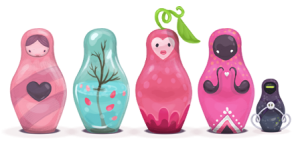
I give The Women of Pearl Island a 4.5 out of 5. The writing was fantastic, and the island was a character all of its own with how much it changed, provided for the family, and ultimately betrayed them as well. Tartelin and Marianne were sympathetic characters, each with a tragic past. Tartelin is trying to actively overcome her grief from losing her mother, while Marianne is still wallowing in events that happened over fifty years ago and hiding behind the walls she’s built up. There are several twists in both of their stories that were surprising, and I mainly just loved how Marianne’s story was revealed throughout the book. There’s a lot of grief and sadness in here, but Tartelin brings some much needed hopefulness and light to Marianne’s life, even as she’s coming to terms with her own losses. The few side characters that are present on the island were decently developed, but the main focus was definitely on Marianne and Tartelin–and I really enjoyed their journey.
Find THE WOMEN OF PEARL ISLAND
Amazon | Barnes & Noble | Bookshop.org | Harlequin | Books-A-Million | Powell’s | Goodreads
About Polly Crosby

Polly Crosby grew up on the Suffolk coast, and now lives deep in the Norfolk countryside. THE BOOK OF HIDDEN WONDERS was awarded runner up in the Bridport Prize’s Peggy Chapman Andrews Award for a First Novel, and Polly also won Curtis Brown Creative’s Yesterday Scholarship, which enabled her to finish the novel. She currently holds the Annabel Abbs Scholarship at the University of East Anglia, where she is studying part time for an MA in Creative Writing. THE WOMEN OF PEARL ISLAND is her second novel.
Connect with Polly Crosby
Website | Twitter | Facebook | Instagram | Goodreads

Latest posts by Heather (see all)
- Time Hop Coffee Shop by Phaedra Patrick - December 13, 2025
- How To Grieve Like a Victorian by Amy Carol Reeves - December 13, 2025
- Dawn of the Firebird by Sarah Mughal Rana - December 6, 2025

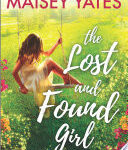


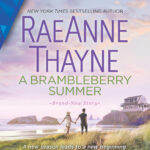

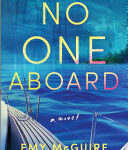

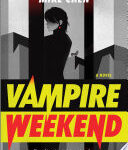









Leave a Reply